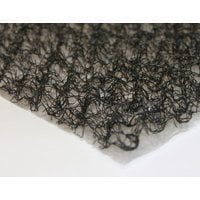I measured the temperature of the roof and solar panel on my current camper during the day yesterday:
Location St. George, UT
August 23, 2016
Partly cloudy, though every temperature reading was done in full sun, except for the first in the garage.
1999 Eagle camper, with Solar Cynergy 120 Watt solar panel, mounted on 6 Z feet.
I had the Fantastic Fan on low and the Engle Fridge operating on high, for a load.
Lower edge of aluminum panel frame sits 3/4 to 1 3/16 inch off the roof, and panel thickness was 1.3 inches.
I used a handheld infrared thermometer to measure surface temperature. Roof is aluminum painted white (a bit dirty).
Time Outside Roof Panel
8 AM 76 81 81 (inside garage in shade)
9 AM 76 79 76
10 AM 78 102 106
11 AM 81 107 109-118
12 AM 85 109 114-122
1 PM 88 114 128
2 PM 91 117 124-129
3 PM 92 116 122-128
4 PM 94 120 125-130
5 PM 96 108 105-109
6 PM 97 98 93
The panel had different temperature readings depending on the particular cell measured. Sometimes I gave the range, other times just the average. When operating in full sun toward noon, the panel was hotter than the roof. During the morning and afternoon, the panel was actually cooler than the roof.
When working, the solar cell must be taking a certain amount of the incident solar energy and removing it, through the wires, to be changed into heat in operating the fan, fridge, charging the battery inside the camper. That would explain why the dark panel would actually read a cooler temp than the white roof at times.
I am surprised at how hot the panels do get at times, even in what is a somewhat moderate summer day in St. George, UT. Dring the heat of mid day, with air temps 91 to 94, I was pushing 130 degrees for surface temp in some solar cells.
For my next test, I may put insulation under half of the panel, and take the temperatures of both sides, to see if the air circulation under the panel makes a big difference. If it works, I am including a picture of my panel and roof.

